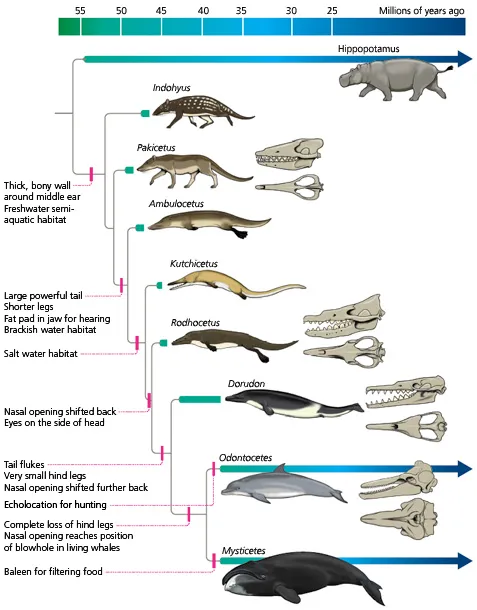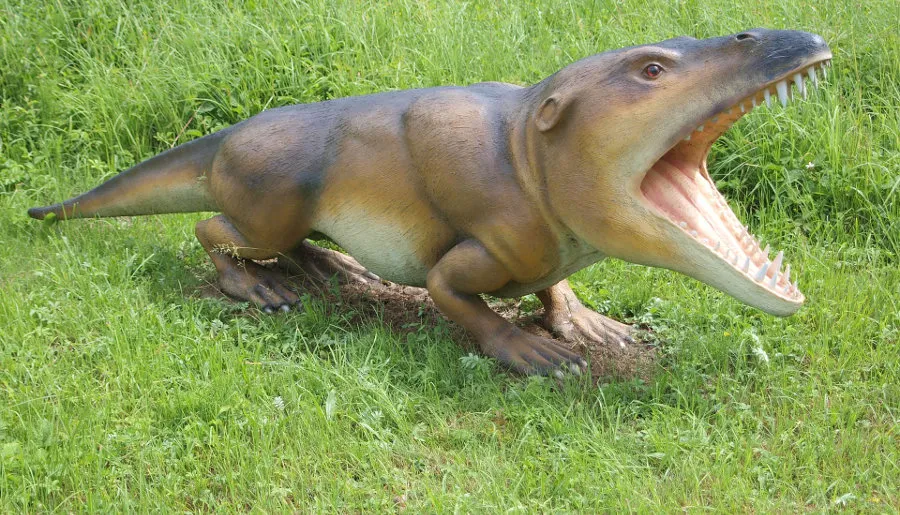This should be of interest to everyone here on steemit.com. The evolution needed to become a whale has been shrouded in mysteries for years, but now we (think we) know, so read on!

Image by stux - source: Pixabay
Oh, I'm sorry; you thought this was about steemit evolution, about becoming a steemit whale? Then I'll have to disappoint you, I'm afraid, for two rather obvious reasons. First, I'm a lowly plankton, so what would I know about becoming a Steemit whale? How could I? If you want to know how to become a steemit whale, ask a steemit whale. Just like in nature, they're not always easy to find and sometimes difficult to approach, but are in general peaceful, well meaning and non-threatening mammals and they only eat..... what... plankton!?! Maybe wait with approaching that whale then ;-) Second, everyone knows that steemit evolution is bogus. I mean plankton to minnow to dolphin to whale is nonsense. Whales are descendant from land animals.
This is one of evolution theory's boldest claims; that whales and dolphins are descendants from land-mammals. It's a strange return to the water, as mammals are the latest to arrive in evolution after life left the sea; they are most adapted to living on land. Creationists have for years had a field-day because there were no fossils that linked land animals to the earliest fully aquatic whales. But these "missing links" have been found in the pas few decades, with the last major find in 2007. We now can show that whales and hippos have a common ancestor, and they share a very interesting physical trait.

The evolution of whales - source: Berkley.edu - Understanding Evolution
Hippos can walk on land, but their bones are very dense, with a relatively thick wall with just a narrow tube in the middle for the bone marrow. This makes it so that these four legged creatures can walk on land and on the bottom surface of rivers: they don't float like other mammals that live exclusively above water. These extremely dense bones is what whales and hippos have in common. And like hippos, the first whales were walkers and not swimmers.
The way whales move through the water is another observation to be made to distinguish them from fish. Where fish move their spinal column from side to side, whales move theirs up and down to propel forward. They use their spinal column in a way similar to how four legged mammals used theirs when they run. Here's a short 'n sweet explanation of the several transitional forms between land and sea mammal:
Whale Evolution: by Nature Video
I hope you are intrigued by this return to the sea by mammals, starting with Indohyus. In a timespan of approximately 10 million years the gigantic whales from today, the Mysticetes, evolved from this nasty looking critter:

Indohyus replica - source: Wikipedia
Well... I'd rather be a plankton :-) Thank you, dear reader, to visit this lowly plankton's blog today! I'll be back again tomorrow and hope you will be here too :-) Until then, stay curious and keep steeming!
PS
Thanks to @meno for showing the picture of a Narwhal today, which gave me the idea for this little post :-) Here's a link to a video with a possible explanation of the tusks: Narwhals: new footage reveals possible purpose for mysterious tusk – video.

Recent articles you might be interested in:

Thanks for stopping by and reading. If you really liked this content, if you disagree (or if you do agree), please leave a comment. Of course, upvotes, follows, resteems are all greatly appreciated, but nothing brings me and you more growth than sharing our ideas. It's what Steemit is made for!


Just for Full Disclosure, I'm invested in these crypto-currencies:
Bitcoin | Litecoin | EOS | OmiseGo | FunFair | KIN | Pillar | DENT | Polymath | XDCE | 0x | Decred | Ethereum | Carmel | XYO